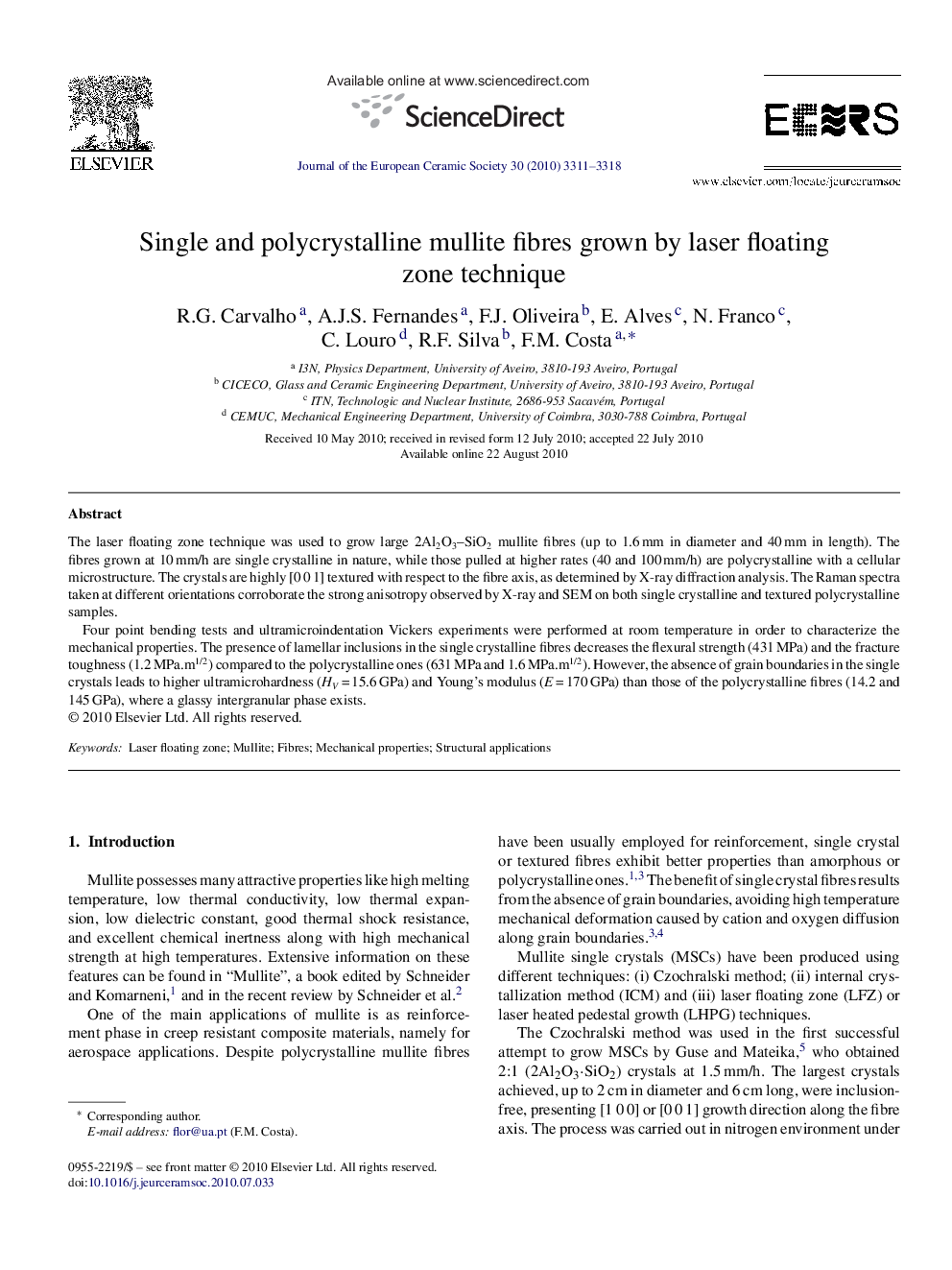| Article ID | Journal | Published Year | Pages | File Type |
|---|---|---|---|---|
| 1476134 | Journal of the European Ceramic Society | 2010 | 8 Pages |
The laser floating zone technique was used to grow large 2Al2O3–SiO2 mullite fibres (up to 1.6 mm in diameter and 40 mm in length). The fibres grown at 10 mm/h are single crystalline in nature, while those pulled at higher rates (40 and 100 mm/h) are polycrystalline with a cellular microstructure. The crystals are highly [0 0 1] textured with respect to the fibre axis, as determined by X-ray diffraction analysis. The Raman spectra taken at different orientations corroborate the strong anisotropy observed by X-ray and SEM on both single crystalline and textured polycrystalline samples.Four point bending tests and ultramicroindentation Vickers experiments were performed at room temperature in order to characterize the mechanical properties. The presence of lamellar inclusions in the single crystalline fibres decreases the flexural strength (431 MPa) and the fracture toughness (1.2 MPa.m1/2) compared to the polycrystalline ones (631 MPa and 1.6 MPa.m1/2). However, the absence of grain boundaries in the single crystals leads to higher ultramicrohardness (HV = 15.6 GPa) and Young's modulus (E = 170 GPa) than those of the polycrystalline fibres (14.2 and 145 GPa), where a glassy intergranular phase exists.
